How Carla Zampatti’s son is keeping the late designer’s legacy alive
Alex Schuman, the pioneering designer’s eldest child transitioned from finance and politics to fashion as the heritage brand celebrates its 60th birthday with pride of place at Australian Fashion Week | WATCH VIDEO
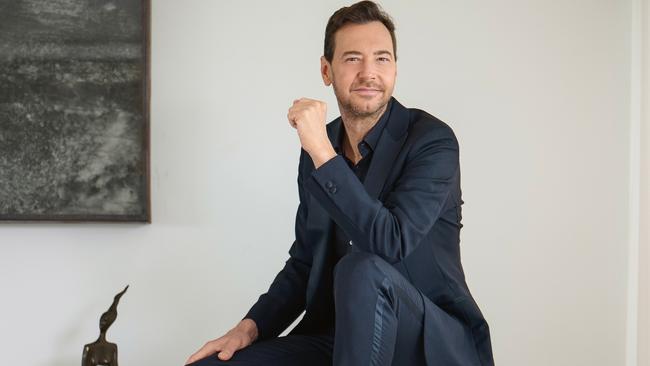
On the terrace of his Potts Point penthouse, the Sydney CBD visible to the west and Rushcutters Bay to the east, Alex Schuman – standing at an imposing 198 centimetres – almost dwarfs the 350-kilogram Dame Elisabeth Frink bronze bust, In Memoriam I, that belonged to his mother, Carla Zampatti AC.
A companion sculpture, In Memoriam II, will eventually be inherited by his half-sister Allegra Spender, but currently resides in the brand’s CZ Salon in Sydney’s Kent Street. The address was until recently the company’s HQ of 45 years but is now a showroom and event space for corporate and philanthropic activities held in Zampatti’s honour.
“We put all of Mum’s art, the paintings, the sculptures and furniture in that room,” smiles the 56-year-old Schuman. “Except for this couch – I wouldn’t surrender it,” he smiles, motioning towards an off-white, low-lying Modernist piece that looks perfectly at home within the clean, minimalist lines of the sky-high apartment he has called home for the past two-and-a-half years.
“It was a very big house,” he recalls of his mother’s 1920s Italian-style Woollahra address. “But we weren’t allowed in certain rooms. As an adult now, I understand that. But she had these big events and for women getting invited to Mum’s house, it was like going to Graceland. It was a real moment where they felt incredibly proud and privileged to be invited there, so we wanted to recreate that. We literally dragged and dropped the living room. She really believed in opening her home to celebrate whatever cause she believed in,” he continues, noting Zampatti’s lifelong advocacy for empowering women, multicultural Australia and the arts in particular.
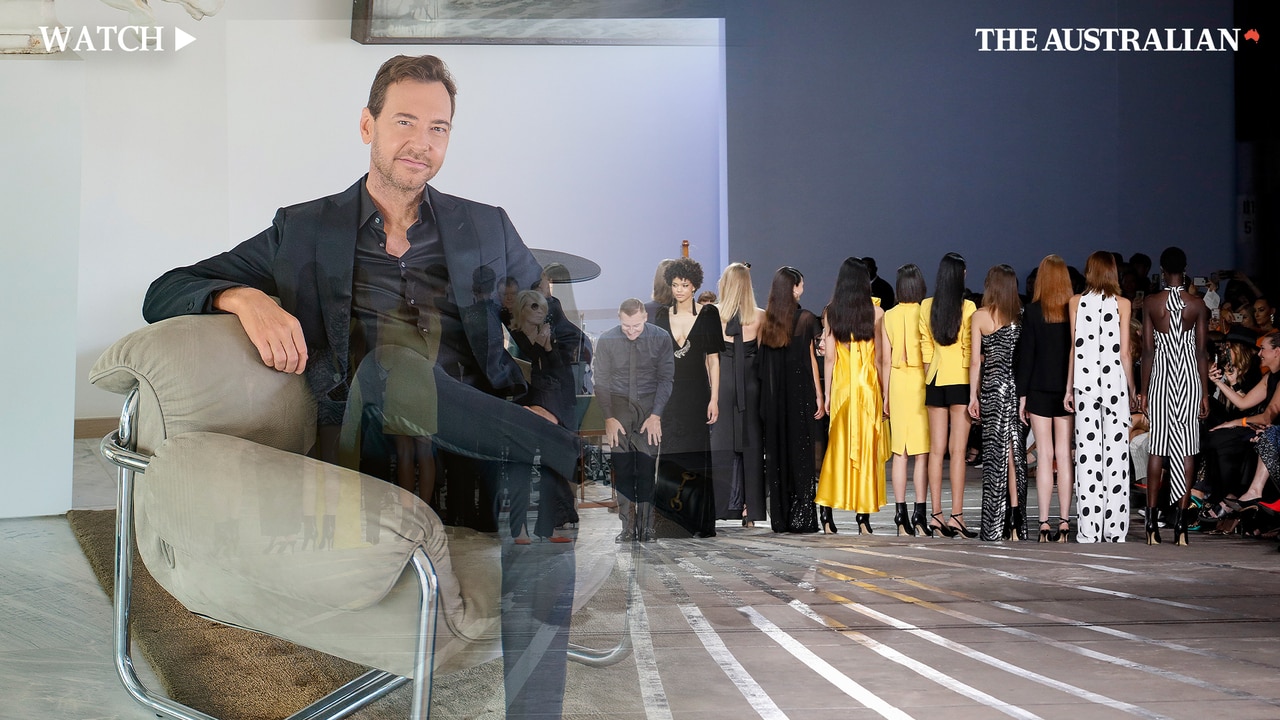
Carla Zampatti emigrated with her family from the small town of Lovero, Italy, to rural Western Australia at the age of eight. She didn’t speak English and left school at 14 but went onto be made a Member of the Order of Australia in 1987, which was elevated to Companion in 2009, while the Italian government appointed her Commander of the Order of Merit of the Italian Republic in 2004. She remained passionate about supporting the underdog throughout her life and career.
Today, four years after his mother’s sudden passing and as the Carla Zampatti brand celebrates its 60th anniversary, her influence is as omnipresent within her only son’s home as it is at work, where he has been chief executive since 2019. Her Anselm Kiefer painting, a replica of Phidias’s Selene Horse sculpture from the Parthenon (now in the British Museum) and Bill Henson prints punctuate his living room. On Schuman’s dining room table sit potted white orchids, while outside it’s white rose topiary trees. “Mum only liked white flowers, anything coloured when straight in the bin,” he smiles.
The same spirit can be felt within Carla Zampatti’s new offices, design studio and factory in Sydney’s Waterloo, where scattered antiques mingle with white, open spaces. “Actually, she sat at this very desk,” he says of the heavy wooden piece that dominates his glassed-in office. “I remember sitting underneath the desk, a bit like JFK Jr. But as a little kid wandering around, soaking it all up.”
Upstairs, the open loft-like space houses finance, marketing, design and pattern-making; below is pattern-cutting and the warehousing of finished garments before they head to the 23-strong retail store network and local and international wholesalers. The actual sewing is done at a network of nearby workshops, meaning Carla Zampatti is still proudly Australian made.
“Four years on, I’m really confident, for the first time, in our future. At its heart, Mum was an amazing creative,” he says. “But, also, she was the world’s best brand ambassador. And finding a way to project that message without using her image anymore, but finding women who really embodied that … she was an extraordinary businesswoman so we’ve had to bolster our business side of it as well.”
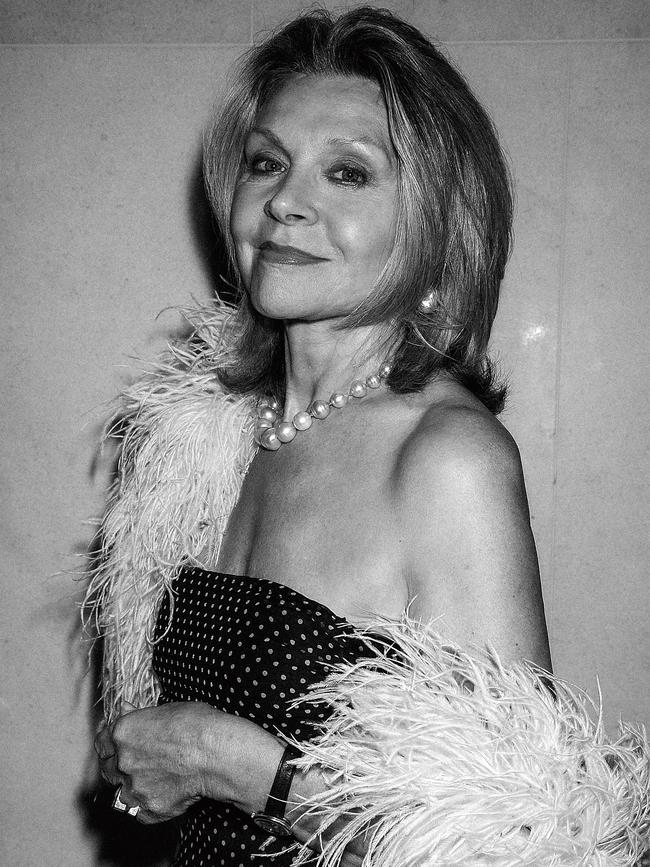
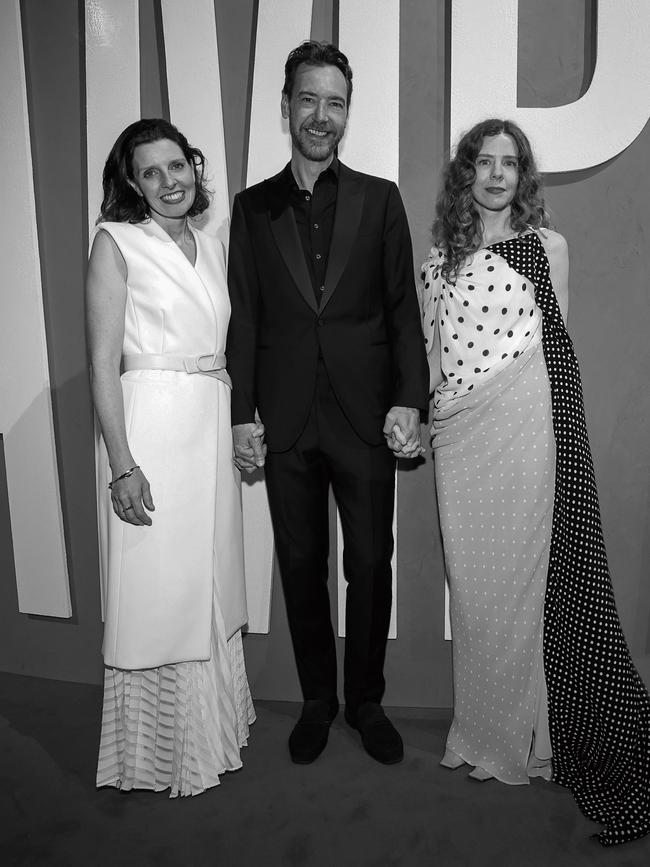
In celebration of the milestone anniversary, Carla Zampatti is opening Australian Fashion Week (AFW) on May 12. In addition, Schuman charged 14 other Australian labels to create a look inspired by his mother’s legacy – KITX, Romance Was Born and Iordanes Spyridon Gogos included.
“My brand is the Trojan horse brand, so the whole idea is ushering new ideas into the industry,” says Jordan Gogos, multidisciplinary artist and fashion designer for Iordanes Spyridon Gogos, sporting a look from his Hautes Grecians collection for WISH’s shoot back in Kent Street’s CZ Salon.
“Carla was the ultimate Trojan horse who pioneered so many spaces, institutions, women …”
Gogos was quick to request access to a vintage pattern to “keep the silhouette of the brand intact, but then I’m working with archive tags,” he says of the logo label he has stitched together into fabric.
“It’s Carla everywhere and shows the historical lineage of the brand DNA and the logo changing. And then the inner lining’s silk has Carla’s signature,” he beams.
Zampatti would certainly have appreciated the camaraderie between these creatives in the room.
“This is the Real Housewives shot,” laughs Gogos, mid pose, as Kit Willow steps in to cinch in his waist with her own hair clip. “I know this is small, but do I need to style my socks?” he quizzes.
“No, they are good Jordan, I like them,” comes the response.
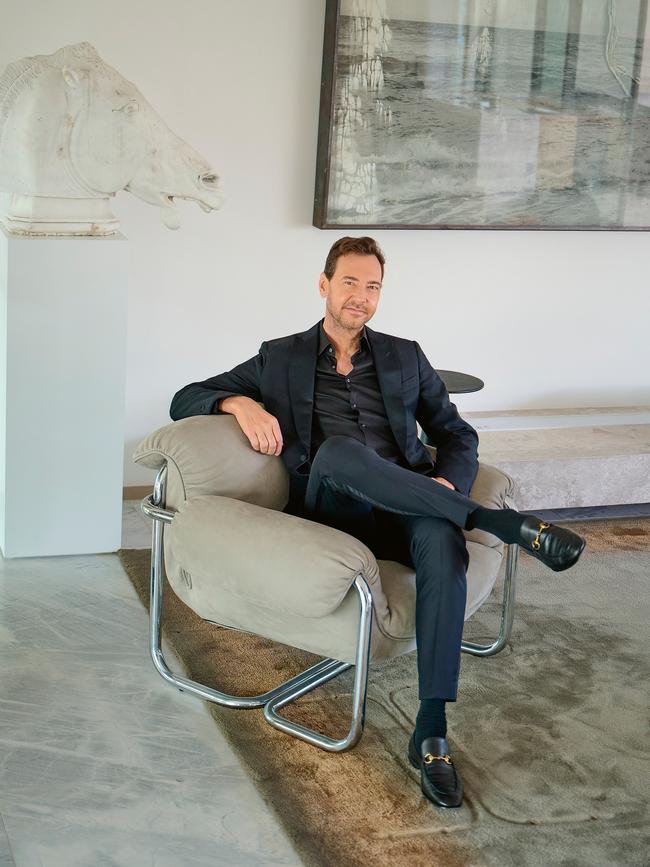
Lifting up the industry, as a collective, was something Zampatti championed throughout her career. “Mum was very altruistic towards the industry as a whole,” reflects Schuman. “She really mentored and supported a lot of young and emerging designers over many years, so that’s something we want to keep doing. But she’d always say Australian creative talents are as strong as you’ll find anywhere in the world, it’s a matter of just revealing them to the global market.”
Zampatti was in fact instrumental in the founding of Australian Fashion Week back in 1996.
“We worked with Carla throughout our career, and she always really supported us and believed in our creativity,” shares Anna Plunkett from Romance Was Born, celebrating its 20th birthday this AFW. “We styled her show once and she always used to say, ‘Clean, bold statements’, and Luke [Sales] and I now always say that in our studio because it’s totally the opposite of what we do.”
For Kit Willow, it was Zampatti’s business nous that flowed freely. “I started Willow when I was 23 and Elena Notte [joining the business] was a massive turning point,” she says of Zampatti’s former general manager. “She was like, ‘This is what Carla does’, so it was that business model that influenced Willow. Carla and I would speak, and I think she loved having the Carla doctorate … the masterclass.” Her son, another pupil of that masterclass, looks every inch the fashion executive in his wardrobe of P. Johnson suits, but the Sydney Grammar alumnus’s background was, in fact, finance, followed by politics.
“For as long as I can remember, basically as soon as I could walk, I was in the business, in the office,” he reflects of the path leading back to his mother’s desk.
“I come from a different father to Bianca and Allegra,” he says of his dad, Dutch immigrant Leo Schuman, who was a qualified accountant and small businessman. He grew up during the war in occupied Holland and then emigrated to Australia like Schuman’s mother.
“My parents divorced when I was newborn,” Schuman continues. “And I think it was a really challenging time. It was before the Whitlam divorce laws came through. We’re talking about 1970, so it was a different era. We lived alone for the first six years until Mum married John Spender [the former Liberal politician and diplomat].” His father retired to Malaga in Spain in 1995 and died there in 1998.
“You don’t really understand it from the outside because you’ve only got one example of a mother, but it’s very clear to see just how ferociously driven she was. And I think if she gave Bianca and Allegra and I one quality, it’s [that] we’ve all got this incredible work ethic that she really drilled into us.”
At Sydney University Schuman graduated from his economics degree with honours, skipping the overseas adventure of his sister Allegra who went on to Cambridge. “She was the lucky child. In my generation, we didn’t get those opportunities,” he laughs. “No, it was just Sydney University and then, because I did economics and it was very kind to me as a career path, I got to do lots of really interesting things, and a lot of travel in my finance career,” he says of working as an economist for Westpac followed by Bankers Trust Australia, working in the bond and FX markets. “It was an amazing group of people in that dealing room,” he says of the preeminent bank at the time. “They all went off to do incredible things.” From there, stints at and Macquarie and Commonwealth banks followed.
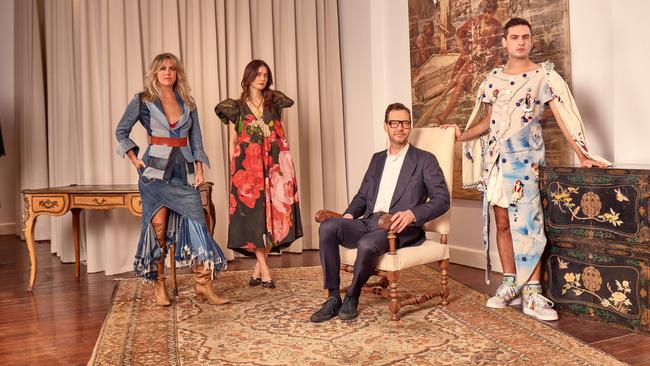
At home, though, politics was never far from the family table. In addition to his own career, John Spender’s father, Sir Percy Spender, was a Liberal MP under prime minister Robert Menzies, a diplomat and the president of the International Court of Justice.
And from 1996 to 2000, John Spender was Australia’s ambassador to France, and for years Zampatti divided her time — month on, month off — between Paris and Sydney. Schuman was in Sydney during this time, while Bianca was working in Italy and Allegra studying at Cambridge.
“Mum was also very political,” Schuman recalls. “She was passionate about politics, and so it was sort of the dinner-table conversation: politics, politics in government and fashion were all the topics.”
Not surprisingly, Schuman has been particularly supportive of Allegra’s political ambitions as she recontests the eastern Sydney seat of Wentworth in the federal election. “I think a lot of the network that I developed during that time are the same people that she deals with now. We talk very frequently and freely about all sorts of things that are political,” he says. “Personally, I’m a direct supporter of many women considering life in politics. Because I think women in politics is a missing ingredient in this country.”
Flashing forward to 2015, as fate would have it, Schuman joined Gladys Berejiklian’s office as head of economic policy.
“Finance led me down a path towards Gladys’s office. She’d just been promoted by Mike Baird from being transport [minister] to treasurer. And I gathered Mike Baird said, ‘Look, you really need to get some finance expertise, and I know this guy, you might want to speak to him’. The chief of staff was like, ‘OK’, and he took that as an instruction, so I joined her three weeks later,” he says of his appointment.
Not surprisingly, Schuman has been particularly supportive of Allegra’s political ambitions. “I think a lot of the network that
I developed during that time are the same people that she deals with now. We talk very frequently and freely about all sorts of things that are political,” he says. “Personally, I’m a direct supporter of many women considering life in politics. Because I think women in politics is a missing ingredient in this country.”
Schuman recently worked with Lisa Havilah, chief executive of the Powerhouse Museum, on a new policy package to support Australia’s emerging fashion industry for the NSW government.
“The arts minister of NSW asked us to have a fashion industry working group to bring to government ways in which the government can better support the fashion industry,” he shares.
“The fashion industry is the biggest cultural export by a long way. We’re twice as large as the wine industry, as an export. But the government has given almost no support to this very important export industry. Unlike film and music, the fashion industry hasn’t really been well organised, so it’s just tended to do its own thing. It’s also an industry being challenged probably more than others by technological innovations. Australian creators are doing really, really well on a world stage, but it’s really about what can the government do to be a bit more deliberative about that and grow the industry.”
It should be noted that this policy is aimed at lifting up the next generation of young creatives, rather than established brands such as his own. The altruistic bent of his mother lives on ...
Similarly, when IMG pulled out of AFW late last year, Schuman was one of the key stakeholders to rally behind the appointment of the Australian Fashion Council, a not-for-profit membership organisation which works to support the fashion and textile industry, to become new custodian of the May event. Zampatti was also a member of the council. “We marched down to the minister the next morning and said, ‘We really need your help to save Australian Fashion Week’, and he’s been an absolute amazing supporter,” he says of NSW Minister for the Arts John Graham.
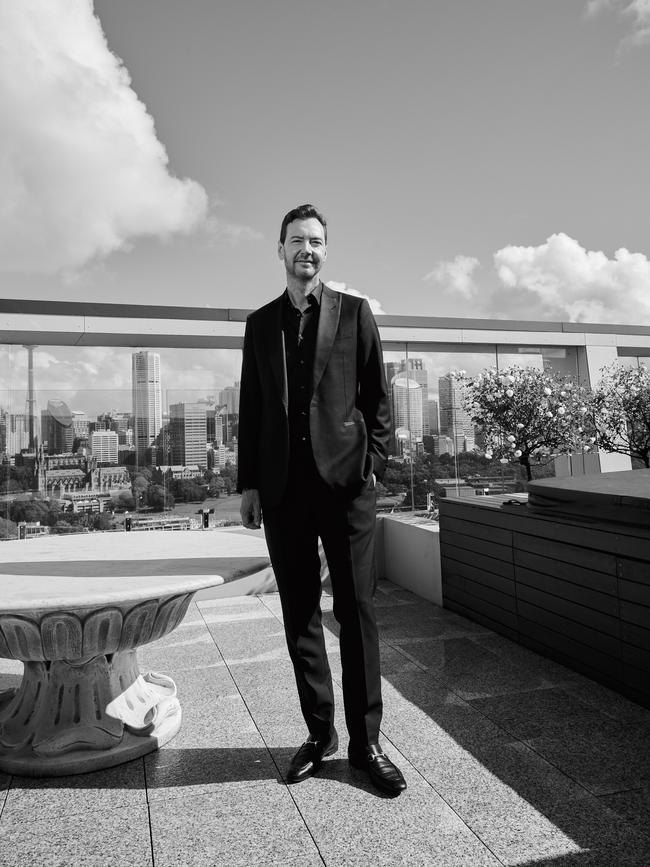
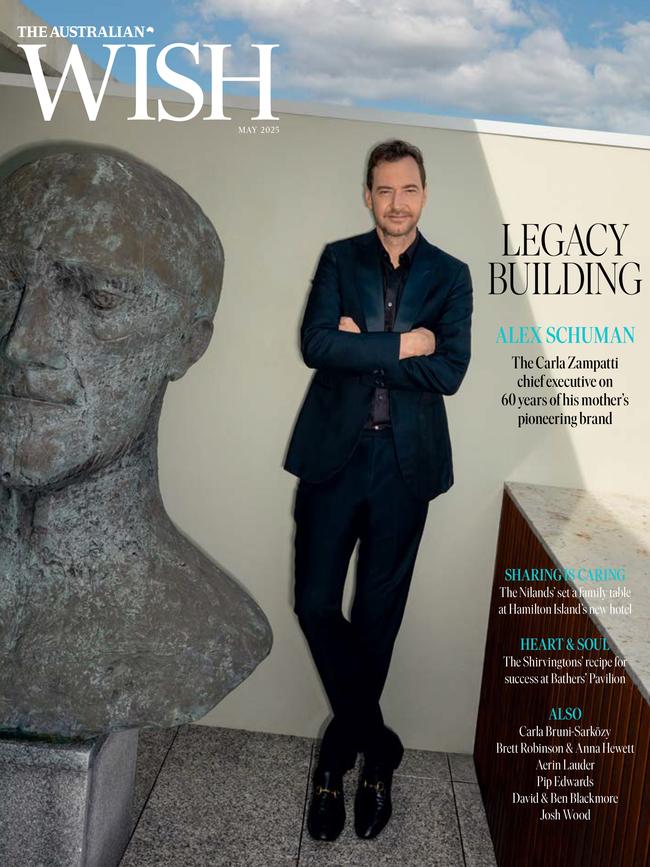
“Australian Fashion Week is absolutely one of those key policies because it’s about bringing offshore eyeballs, media, celebrities and buyers to Sydney,” Schuman adds.
His mother always said she would like to be remembered as someone who paid it forward, and her son is doing just that, continuing her support of the arts (he’s out many a weeknight – Sydney theatre, dance, Biennale), empowering women, multicultural Australia and various philanthropic causes, all of which is now funnelled through the Carla Zampatti Foundation.
“Paying it forward is a really nice way of putting it,” he agrees. “She was very altruistic, not just in the fashion industry but especially towards women. She also was one of the women who founded Chief Executive Women [the Australian organisation supports female entrepreneurs and those in leadership roles].” He has childhood memories of having these women around for drinks at home every couple of months. “You could feel the energy in the room. I was just a teenager at the time. And now, 40 years later, they’ve celebrated their 40th anniversary and it’s just an enormous achievement and such an empowering thing,” he says, noting the boards and businesses that benefited from Zampatti’s insights including the Sydney Dance Company, Art Gallery of NSW, Westfield, the Australian Multicultural Foundation and SBS – where she was the first female chair.
“Mum wasn’t one of those people who felt, ‘Oh, there’s only room for one woman at the board. It’s me’. Her work wasn’t complete until it was only women on the board. She just did everything possible to see women advance and take roles that were traditionally held by men.”
Not to say fashion was in any way preplanned as Schuman’s eventual professional destination. “It wasn’t always a given that I’d end up here, no,” he says with a smile. “The business is like an older sibling, and Mum’s favourite child as we’d like to say. I never felt like an outsider coming into the business. There wasn’t a time when any of us have lost contact with the business. But Mum, when she got older, this was a couple of years before she passed away, she goes, ‘Look, I’m ready to step down from the day-to-day running, just do the creative design’. And she asked us who wanted to run it. And so, I stepped up. Bianca and Allegra by then were pursuing other things. I’m often asked, ‘What’s it like coming back after all those years?’ I don’t think I feel like I ever left.”
For Schuman, the timing was right as he was leaving the then premier’s office. “I did my four-year tour of duty and wanted to return to civilian life,” he smiles.
“When you’re working for Gladys Berejiklian, there’s no life balance. I think you end up working 70, 80 hours a week and seven days a week. Keeping up with someone as voraciously smart and hard working as her, that’s full-time … every waking moment.”
He smiles, “Mum and Gladys are actually very similar people.”
As for he and his mum? “We’re both [Taureans], we’re both headstrong and we had similar sorts of views on lots of things. I think we all carry different traits of Mum. I think probably, and this might be disputed, but I think I’m more of the business mindset. Growing up, I just felt very comfortable around strong-minded women.”
He still does. “It was four years and five days,” he reflects on Zampatti’s unexpected passing. “We weren’t certain that the business would survive a second generation, but I think when we really reflected on it, the Carla Zampatti brand has a really big role, and it’s much more than just a role in fashion; it really is our role in that conversation about identity and power and creativity. And so that’s taken us, and me in particular, on a big journey about how to explore and express that.”
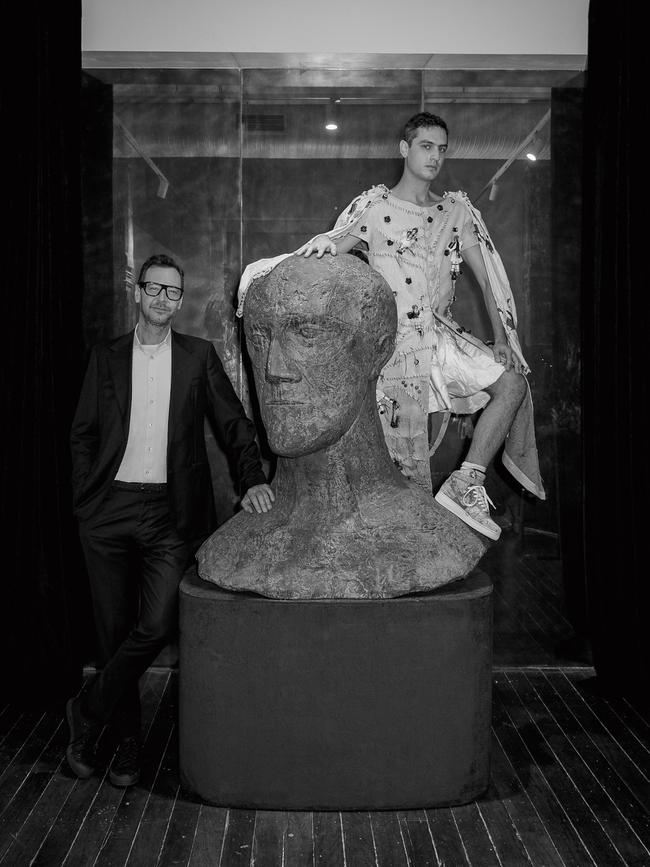
In house, the brand has a new design director in Tanya Emon Beattie, who has rejoined the business. It’s a common theme with many Carla Zampatti employees boomeranging back over the decades. “Tanya was a young understudy to Mum almost 20 years ago. She joined in the early 2000s, and she worked with Mum for years.” Emon Beattie returned a year ago and this will be her AFW debut. “She has that incredible understanding of the brand and our product, customers and values. Aside from that, she also knows so many people in the building who were here when she left the first time,” Schuman laughs.
“It’s very difficult to take somebody from the outside and say, ‘You’ve got your voice, but now you have to design with somebody else’s voice in mind’. We’re very clear about who we are. I feel like I’m a custodian of those brand aesthetics and the brand values. We’re always loyal to that customer who wants to feel empowered, beautiful and confident in whatever task she’s taking on that day. It’s power dressing.”
Currently the Zampatti customer wants workwear, jackets in particular – pieces that are versatile and long-lasting. “We’ve seen a really big lift since the start of this year,” Schuman shares. “We’re having a very good time of it.”
While overseas expansion is often in his thoughts, the US isn’t top of mind right now, fortunately. “With every day passing, it looks more and more permanent and potentially very damaging,” he says of the Trump tariffs. “But in terms of exporting to the United States, we have a big advantage because we manufacture in Australia, not China.”
Asia is rather appealing though. “There’s a lot of potential if we were to open directly in Singapore, and also in the Middle East because there’s a very strong following,” he says.
For now, the focus is on the window to the world that is Australian Fashion Week, where the brand will show in front of the Museum of Contemporary Art, with the Harbour Bridge and Opera House in frame. After that, it’s his wedding to fiancée Rebecca LeBherz. “We can’t talk about the wedding until after May 12,” he laughs with his long-serving PR within earshot. “Then we’ll see who does the wedding dress. There are a few in the industry who are dying to do that one.”
And as for the chances of a third-generation family business? Zampatti has nine grandchildren, including Schuman’s four children from his first marriage, who range in age from 19 to 24.
“We forced them to ‘work’ in the business while they’re school age,” he smiles. “And then during university, they come and go, and then we insist that they find their own pathway after that to get some life experience, so we’re in that zone right now. One of them is here actually today, during his university break,” he says of his 19-year-old son Dario Schuman. Family ties run deep.
This story is from the May issue of WISH.





To join the conversation, please log in. Don't have an account? Register
Join the conversation, you are commenting as Logout